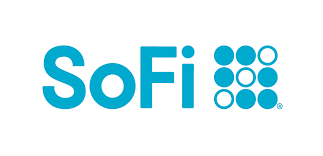Choosing the right checking account isn't just about where you keep your money. It's about finding one that fits your lifestyle and helps you get more out of your everyday banking. Whether you're after low fees, high interest, cash back, or easy ATM access, the right account can make a big difference.
With so many options out there, it helps to focus on what matters most. We've researched and compared APYs, fees, account perks, and brand reputation to bring you the best choices. Here are our top picks to help you find the one that works best for you.
- Our team of experts assessed 100+ banking institutions
- We evaluate all banking institutions across the same 4 key criteria: annual percentage yield (APY), brand reputation, fees and minimum requirements, and additional perks
- Our bank ratings are never influenced by our advertising partners
- We strictly feature products that offer federal insurance and high customer satisfaction, keeping our recommendations unbiased
| Offer | APY | Minimum to Earn APY | Rating | Next Steps | |
|---|---|---|---|---|---|
|
SoFi Checking and Savings
Open Account for SoFi Checking and Savings
On SoFi's Secure Website.
4.50/5
Our ratings are based on a 5 star scale.
5 stars equals Best.
4 stars equals Excellent.
3 stars equals Good.
2 stars equals Fair.
1 star equals Poor.
We want your money to work harder for you. Which is why our ratings are biased toward offers that deliver versatility while cutting out-of-pocket costs.
|
0.50%
Rate info
SoFi members who enroll in SoFi Plus with Eligible Direct Deposit or by paying the SoFi Plus Subscription Fee every 30 days or SoFi members with $5,000 or more in Qualifying Deposits during the 30-Day Evaluation Period can earn 3.80% annual percentage yield (APY) on savings balances (including Vaults) and 0.50% APY on checking balances. There is no minimum Eligible Direct Deposit amount required to qualify for the stated interest rate. Members without either SoFi Plus or Qualifying Deposits, during the 30-Day Evaluation Period will earn 1.00% APY on savings balances (including Vaults) and 0.50% APY on checking balances. Interest rates are variable and subject to change at any time. These rates are current as of 1/24/25. There is no minimum balance requirement. If you have satisfied Eligible Direct Deposit requirements for our highest APY but do not see 3.80% APY on your APY Details page the day after your Eligible Direct Deposit arrives, please contact us at 855-456-7634. Additional information can be found at http://www.sofi.com/legal/banking-rate-sheet. See the SoFi Plus Terms and Conditions at https://www.sofi.com/terms-of-use/#plus.
Min. to earn: $0
|
4.50/5
Our ratings are based on a 5 star scale.
5 stars equals Best.
4 stars equals Excellent.
3 stars equals Good.
2 stars equals Fair.
1 star equals Poor.
We want your money to work harder for you. Which is why our ratings are biased toward offers that deliver versatility while cutting out-of-pocket costs.
|
$0
|
Open Account for SoFi Checking and Savings
On SoFi's Secure Website. |
|
|
Discover® Cashback Debit
Open Account for Discover® Cashback Debit
On Discover Bank's Secure Website.
5.00/5
Our ratings are based on a 5 star scale.
5 stars equals Best.
4 stars equals Excellent.
3 stars equals Good.
2 stars equals Fair.
1 star equals Poor.
We want your money to work harder for you. Which is why our ratings are biased toward offers that deliver versatility while cutting out-of-pocket costs.
|
0%
Min. to earn: N/A
|
5.00/5
Our ratings are based on a 5 star scale.
5 stars equals Best.
4 stars equals Excellent.
3 stars equals Good.
2 stars equals Fair.
1 star equals Poor.
We want your money to work harder for you. Which is why our ratings are biased toward offers that deliver versatility while cutting out-of-pocket costs.
|
N/A
|
Open Account for Discover® Cashback Debit
On Discover Bank's Secure Website. |
|
|
Quontic High Interest Checking
Open Account for Quontic High Interest Checking
On Quontic's Secure Website.
4.50/5
Our ratings are based on a 5 star scale.
5 stars equals Best.
4 stars equals Excellent.
3 stars equals Good.
2 stars equals Fair.
1 star equals Poor.
We want your money to work harder for you. Which is why our ratings are biased toward offers that deliver versatility while cutting out-of-pocket costs.
|
up to 1.10%
Min. to earn: $1
|
4.50/5
Our ratings are based on a 5 star scale.
5 stars equals Best.
4 stars equals Excellent.
3 stars equals Good.
2 stars equals Fair.
1 star equals Poor.
We want your money to work harder for you. Which is why our ratings are biased toward offers that deliver versatility while cutting out-of-pocket costs.
|
$1
|
Open Account for Quontic High Interest Checking
On Quontic's Secure Website. |
|
|
10 debit card point of sale transactions of $10 or more per statement cycle required to earn the maximum APY. If the qualifying activity requirement is not fulfilled, the interest rate paid on the entire balance will be 0.01% APY. |
10 debit card point of sale transactions of $10 or more per statement cycle required to earn the maximum APY. If the qualifying activity requirement is not fulfilled, the interest rate paid on the entire balance will be 0.01% APY. |
||||
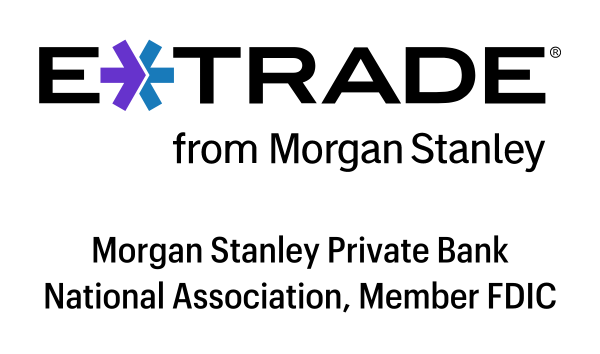
E*TRADE Max-Rate Checking
Open Account for E*TRADE Max-Rate Checking
On E*TRADE's Secure Website.
4.25/5
Our ratings are based on a 5 star scale.
5 stars equals Best.
4 stars equals Excellent.
3 stars equals Good.
2 stars equals Fair.
1 star equals Poor.
We want your money to work harder for you. Which is why our ratings are biased toward offers that deliver versatility while cutting out-of-pocket costs.
|
3.00%
Min. to earn: $0.01
|
4.25/5
Our ratings are based on a 5 star scale.
5 stars equals Best.
4 stars equals Excellent.
3 stars equals Good.
2 stars equals Fair.
1 star equals Poor.
We want your money to work harder for you. Which is why our ratings are biased toward offers that deliver versatility while cutting out-of-pocket costs.
|
$0.01
|
Open Account for E*TRADE Max-Rate Checking
On E*TRADE's Secure Website. |
|

Member FDIC.
4.00/5
Our ratings are based on a 5 star scale.
5 stars equals Best.
4 stars equals Excellent.
3 stars equals Good.
2 stars equals Fair.
1 star equals Poor.
We want your money to work harder for you. Which is why our ratings are biased toward offers that deliver versatility while cutting out-of-pocket costs.
|
0.40% (up to 3.30%)
Rate info
To earn the full APY, account holders must do all of the following: Receive monthly direct deposits totaling more than $1,500; make 10 transactions a month with your Axos debit card, or sign up for Axos's Personal Finance Manager; maintain an average daily balance of $2,500 per month in an Axos Invest Self Directed Trading Account; and use your Rewards Checking account to make your full monthly Axos Bank consumer mortgage, personal, or auto loan payment.
Min. to earn: Monthly direct deposits totaling at least $1,500
|
4.00/5
Our ratings are based on a 5 star scale.
5 stars equals Best.
4 stars equals Excellent.
3 stars equals Good.
2 stars equals Fair.
1 star equals Poor.
We want your money to work harder for you. Which is why our ratings are biased toward offers that deliver versatility while cutting out-of-pocket costs.
|
Monthly direct deposits totaling at least $1,500
|
||
|
Rewards Checking disclosure: To be eligible to earn all or a portion of the cash incentive as part of the promotional offer "RC500," an application for a Rewards Checking account must be submitted between 06/20/2024 at 12:00 am PT and 07/31/24 at 11:59 pm PT. Axos Bank reserves the right to limit each primary account holder to one (1) checking account promotional offer per year. Promotional terms and conditions are subject to change or removal without notice. Incentive may be taxable and reported on IRS Form 1099-MISC. Consult your tax advisor. After initial requirements above are met, the amount of incentive earned will depend on meeting the additional requirements outlined below: Rewards Checking bonus up to $500: You must be approved for your new Rewards Checking account and fund it within 60 days of account opening. An incentive of up to $500 can be earned during the first six (6) statement cycles, starting in the statement cycle thirty (30) days after the account is opened. A statement cycle is a calendar month consisting of at least one day your account was open during that month. You can earn a maximum of five (5) payouts during the six (6) statement cycles, and the incentive will be deposited into the qualifying account within 15 business days following the end of the statement cycle in which the requirements were met. $100 will be earned for each statement cycle, up to $500, when you meet two requirements during that statement cycle: 1) your Rewards Checking account receives qualifying direct deposits at least $1,500.00 in total, and 2) the average daily balance in your Rewards Checking account is at least $3,000. Your Rewards Checking account must remain open and in good standing at the time the incentive is paid to be eligible. A direct deposit is an electronic deposit of your paycheck or government benefits, such as Social Security, Disability etc. Other deposits (i.e., online banking transfers, ATM and mobile check deposits, etc.) or person-to-person payments are not considered a direct deposit. Account transactions may take one or more business days from the transaction date to post to the account. |
Rewards Checking disclosure: To be eligible to earn all or a portion of the cash incentive as part of the promotional offer "RC500," an application for a Rewards Checking account must be submitted between 06/20/2024 at 12:00 am PT and 07/31/24 at 11:59 pm PT. Axos Bank reserves the right to limit each primary account holder to one (1) checking account promotional offer per year. Promotional terms and conditions are subject to change or removal without notice. Incentive may be taxable and reported on IRS Form 1099-MISC. Consult your tax advisor. After initial requirements above are met, the amount of incentive earned will depend on meeting the additional requirements outlined below: Rewards Checking bonus up to $500: You must be approved for your new Rewards Checking account and fund it within 60 days of account opening. An incentive of up to $500 can be earned during the first six (6) statement cycles, starting in the statement cycle thirty (30) days after the account is opened. A statement cycle is a calendar month consisting of at least one day your account was open during that month. You can earn a maximum of five (5) payouts during the six (6) statement cycles, and the incentive will be deposited into the qualifying account within 15 business days following the end of the statement cycle in which the requirements were met. $100 will be earned for each statement cycle, up to $500, when you meet two requirements during that statement cycle: 1) your Rewards Checking account receives qualifying direct deposits at least $1,500.00 in total, and 2) the average daily balance in your Rewards Checking account is at least $3,000. Your Rewards Checking account must remain open and in good standing at the time the incentive is paid to be eligible. A direct deposit is an electronic deposit of your paycheck or government benefits, such as Social Security, Disability etc. Other deposits (i.e., online banking transfers, ATM and mobile check deposits, etc.) or person-to-person payments are not considered a direct deposit. Account transactions may take one or more business days from the transaction date to post to the account. |
||||
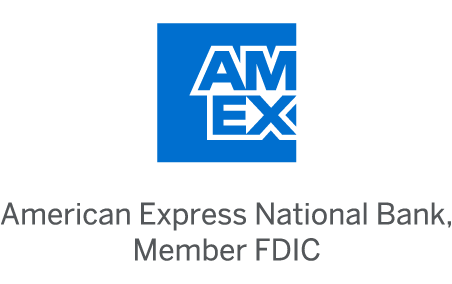
American Express Rewards Checking
Member FDIC.
5.00/5
Our ratings are based on a 5 star scale.
5 stars equals Best.
4 stars equals Excellent.
3 stars equals Good.
2 stars equals Fair.
1 star equals Poor.
We want your money to work harder for you. Which is why our ratings are biased toward offers that deliver versatility while cutting out-of-pocket costs.
|
1.00%
Rate info
APY = annual percentage yield
Min. to earn: $0
|
5.00/5
Our ratings are based on a 5 star scale.
5 stars equals Best.
4 stars equals Excellent.
3 stars equals Good.
2 stars equals Fair.
1 star equals Poor.
We want your money to work harder for you. Which is why our ratings are biased toward offers that deliver versatility while cutting out-of-pocket costs.
|
$0
|
||
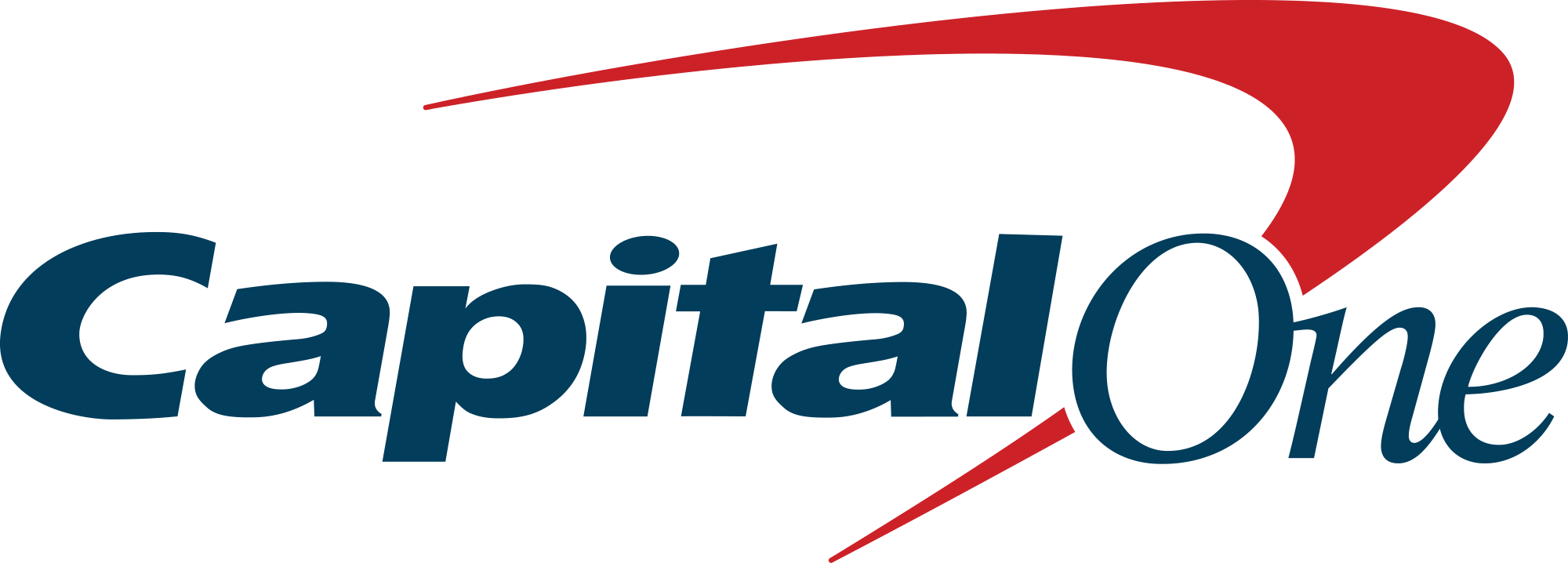
Member FDIC.
4.50/5
Our ratings are based on a 5 star scale.
5 stars equals Best.
4 stars equals Excellent.
3 stars equals Good.
2 stars equals Fair.
1 star equals Poor.
We want your money to work harder for you. Which is why our ratings are biased toward offers that deliver versatility while cutting out-of-pocket costs.
|
0.10%
Min. to earn: $0
|
4.50/5
Our ratings are based on a 5 star scale.
5 stars equals Best.
4 stars equals Excellent.
3 stars equals Good.
2 stars equals Fair.
1 star equals Poor.
We want your money to work harder for you. Which is why our ratings are biased toward offers that deliver versatility while cutting out-of-pocket costs.
|
$0
|
||
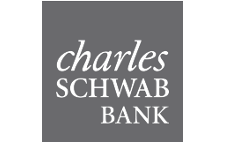
Schwab Bank Investor Checking™
4.75/5
Our ratings are based on a 5 star scale.
5 stars equals Best.
4 stars equals Excellent.
3 stars equals Good.
2 stars equals Fair.
1 star equals Poor.
We want your money to work harder for you. Which is why our ratings are biased toward offers that deliver versatility while cutting out-of-pocket costs.
|
0.05%
Min. to earn: $0.01
|
4.75/5
Our ratings are based on a 5 star scale.
5 stars equals Best.
4 stars equals Excellent.
3 stars equals Good.
2 stars equals Fair.
1 star equals Poor.
We want your money to work harder for you. Which is why our ratings are biased toward offers that deliver versatility while cutting out-of-pocket costs.
|
$0.01
|
|
|
At Motley Fool Money, we rate checking accounts on a five-star scale (1 = poor, 5 = best). We evaluate all checking accounts across four main criteria: brand and reputation, annual percentage yield (APY), fees and minimum requirements, and perks that really make a difference -- think branch access, additional linked account integrations, and welcome offers.
Our scores are weighted as:
- Brand and reputation: 40%
- APY: 30%
- Fees and minimums: 15%
- Other perks: 15%
Our aim is to maintain a balanced list featuring top-scoring products from reputable brands offering standout features. Learn more about how Motley Fool Money rates bank accounts.
At Motley Fool Money, we rate checking accounts on a five-star scale (1 = poor, 5 = best). We evaluate all checking accounts across four main criteria: brand and reputation, annual percentage yield (APY), fees and minimum requirements, and perks that really make a difference -- think branch access, additional linked account integrations, and welcome offers.
Our scores are weighted as:
- Brand and reputation: 40%
- APY: 30%
- Fees and minimums: 15%
- Other perks: 15%
Our aim is to maintain a balanced list featuring top-scoring products from reputable brands offering standout features. Learn more about how Motley Fool Money rates bank accounts.
Best checking accounts
Best savings and checking account in one
SoFi Checking and Savings
On SoFi's Secure Website.
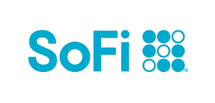
On SoFi's Secure Website.
- Competitive APY on both Savings and Checking
- No monthly account fee
- Welcome bonus up to $300 (direct deposit required)
- ATM access
- Unlimited number of external transfers (up to daily transaction limits)
- FDIC insured (up to $3M with opt-in to SoFi Insured Deposit Program)
- Early access to direct deposits
- Tools to help you track savings goals
- Combo account only; no stand-alone savings or checking
- Maximum Savings APY requires direct deposit
- No branch access; online only
- Overdraft protection requires monthly direct deposit minimum
With no fees or minimums and tools designed to maximize your savings, the combo account is a good fit for individuals who want to do most of their banking in one place online. The account offers flexibility to access or move funds, especially if your employer's payroll system allows you to access the bank's early direct deposit benefit.
Why settle for just a checking account when you can have a checking and savings duo that actually pays you? SoFi® offers an above-average 0.50% APY on checking and an impressive APY of up to 3.80% on savings, without monthly minimums.
The catch? To snag that top-tier savings rate, you'll need to set up direct deposit or deposit at least $5,000 every 30 days. But if you're looking for an all-in-one account that rewards you for keeping your money in one place, this is a standout pick.
Best for cash back rewards
Discover® Cashback Debit
On Discover Bank's Secure Website.

On Discover Bank's Secure Website.
- Cash back rewards on debit cards
- Early direct deposit
- No monthly maintenance, NSF, or overdraft fees
- Great customer service
- Cash back rewards capped
- No interest-bearing checking account
- No physical branches
- No reimbursement for out-of-network ATMs
The Discover Cashback Debit account could be a lucrative option for those who frequently use their debit card. With cash back on eligible purchases, it's possible to earn even more than you could with a typical checking account APY without changing your habits at all. The fact that Discover has done away with many common checking account fees only adds to its appeal.
Cash back on a debit card? Yes, really. Discover® Cashback Debit is shaking things up by offering up to $360 per year in rewards -- something most checking accounts can't match with interest alone. You won't earn an APY, but if you're swiping your debit card often, this could put more money back in your pocket than a standard checking account ever would.
Best for frequent debit card users
Quontic High Interest Checking
On Quontic's Secure Website.
On Quontic's Secure Website.
- High checking APY
- No monthly fees, overdraft, or NSF fees
- Comes with a debit card
- Large fee-free ATM network
- Quontic Pay Ring: the nation's first wearable payment ring
- Must meet monthly transaction requirements to earn higher interest tier
- No physical branches
Quontic High Interest Checking earns one of the highest APYs among checking accounts. Unfortunately, you must make 10 qualifying debit card purchases of $10 or more each statement cycle to earn the highest interest tier. Still, the account is a good option to maximize savings beyond other deposit accounts. Plus, it has no monthly fees and access to fee-free ATMs.
10 debit card point of sale transactions of $10 or more per statement cycle required to earn the maximum APY. If the qualifying activity requirement is not fulfilled, the interest rate paid on the entire balance will be 0.01% APY.
If your debit card is your go-to for everyday spending, Quontic makes it work harder for you. With 10 or more qualifying purchases per month, you can unlock a solid APY, making this a great option for those who prefer swiping over saving.
Best for linked investment accounts
E*TRADE Max-Rate Checking
On E*TRADE's Secure Website.
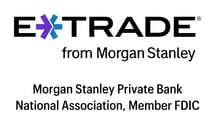
On E*TRADE's Secure Website.
- High APY
- ATM refunds worldwide
- High monthly fee
- No branch access
For those who want to earn more interest on their checking account balance, E*TRADE Max-Rate Checking offers one of the highest APYs we've found. You'll need to keep an average monthly balance of $5,000 to waive the $15 fee, but you'll get fee reimbursements for ATMs worldwide.
E*TRADE Max-Rate Checking offers one of the highest yields we've seen: 3.00% APY on your entire balance. Unlike many high-yield checking accounts that cap their best rates at a certain balance, E*TRADE keeps the APY high across the board. And if you're already investing with E*TRADE, this account is a no-brainer -- it links seamlessly to your investment and savings accounts for instant transfers.
Best APY potential
Axos Bank Rewards Checking

- High checking account APY
- Unlimited ATM fee reimbursements
- No monthly maintenance, NSF, or overdraft fees
- No monthly balance requirements
- Cash back checking option
- Must meet certain requirements to earn the highest interest tier
- Low savings and CD APYs compared to competitors
A solid checking account with an APY that far outpaces the competition. The fact that it also has no maintenance fees and no overdraft or NSF fees are the cherries on top.
Rewards Checking disclosure:
To be eligible to earn all or a portion of the cash incentive as part of the promotional offer "RC500," an application for a Rewards Checking account must be submitted between 06/20/2024 at 12:00 am PT and 07/31/24 at 11:59 pm PT.
Axos Bank reserves the right to limit each primary account holder to one (1) checking account promotional offer per year. Promotional terms and conditions are subject to change or removal without notice. Incentive may be taxable and reported on IRS Form 1099-MISC. Consult your tax advisor. After initial requirements above are met, the amount of incentive earned will depend on meeting the additional requirements outlined below:
Rewards Checking bonus up to $500: You must be approved for your new Rewards Checking account and fund it within 60 days of account opening. An incentive of up to $500 can be earned during the first six (6) statement cycles, starting in the statement cycle thirty (30) days after the account is opened. A statement cycle is a calendar month consisting of at least one day your account was open during that month. You can earn a maximum of five (5) payouts during the six (6) statement cycles, and the incentive will be deposited into the qualifying account within 15 business days following the end of the statement cycle in which the requirements were met.
$100 will be earned for each statement cycle, up to $500, when you meet two requirements during that statement cycle: 1) your Rewards Checking account receives qualifying direct deposits at least $1,500.00 in total, and 2) the average daily balance in your Rewards Checking account is at least $3,000.
Your Rewards Checking account must remain open and in good standing at the time the incentive is paid to be eligible.
A direct deposit is an electronic deposit of your paycheck or government benefits, such as Social Security, Disability etc. Other deposits (i.e., online banking transfers, ATM and mobile check deposits, etc.) or person-to-person payments are not considered a direct deposit. Account transactions may take one or more business days from the transaction date to post to the account.
Axos Bank Rewards Checking comes with an APY that rivals even high-yield savings accounts. If you can meet the qualifications, you'll earn a return that few checking accounts can match, helping your money work harder while staying fully accessible.
Best for Amex cardholders
American Express Rewards Checking
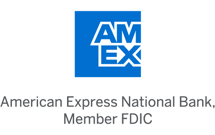
- High APY
- Debit card rewards with no cap
- No monthly maintenance and minimum deposit fees
- 24/7 customer service
- Must be an American Express Card Member
- Banking services are limited
- Online-only bank
With Amex Rewards Checking, you can earn 1 Membership Rewards point for each $2 of eligible debit card purchase. There are no monthly fees or minimum balance requirements for the account. You can redeem your points for deposits into your Amex Rewards Checking account and there is no cap on how many points you can earn. The account offers a high annual percentage yield (APY), too.
If you're already an Amex cardholder, this account is worth a look. You'll earn 1 Membership Rewards point per $2 spent on eligible debit card purchases, with no cap on rewards. The catch? You need to have been an Amex card member for at least 35 days before opening an account. If you're not there yet, check out our list of best American Express cards to get started.
Best for branch access
Capital One 360 Checking

- Branches and Capital One Cafes in some states
- Variety of accounts
- Robust digital platform and app
- Great customer service
- Higher APY available at other financial institutions
Capital One boasts a top-rated mobile app and has over 70,000 fee-free Capital One, MoneyPass, and Allpoint ATM locations. For those looking for face-to-face interaction, Capital One has over 450 locations and 50 Capital One Cafes, where customers can bank, get a cup of coffee, and ask for advice from a certified money coach. However the APY is lower than other online banks.
Love in-person banking? Capital One offers over 250 branch locations nationwide, making it one of the best options for those who still appreciate face-to-face service. Plus, its checking accounts come with no fees, solid digital tools, and easy access to your money -- whether you prefer a teller or an app.
Best for ATM users
Schwab Bank Investor Checking™
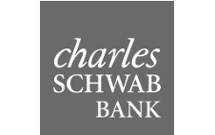
- Earns interest
- No foreign transaction fees
- No monthly maintenance fees
- Unlimited ATM fee reimbursements worldwide
- Great customer service
- Free linked investment account with checking account
- Requires a linked brokerage account
- No cash deposits
The Schwab Bank Investor Checking™ account pays interest and has no monthly fees. It's also a favorite among travelers, as it reimburses all domestic and international ATM fees and doesn't charge foreign transaction fees.
Frequent ATM user? World traveler? Schwab Bank Investor Checking™ might be your new best friend. This account reimburses all ATM fees worldwide and charges no foreign transaction fees, making it a standout for those who are always on the go. The one requirement: You'll need a linked Charles Schwab brokerage account, but there's no minimum balance required to open one.
How to choose the best checking account for you
The best checking account isn't one-size-fits-all. It depends on how you spend, save, and manage your money. Here are a few key factors to consider when picking the right one:
Fees and minimums
Look for an account with low or no fees. Monthly maintenance fees, overdraft fees, and minimum balance requirements can eat into your money fast. Many online banks offer fee-free checking, while traditional banks may waive fees if you meet certain conditions, like setting up direct deposit.
Bank safety and reputation
Not all banks are created equal when it comes to security. If keeping your money in a financially stable, well-protected bank is a top priority, look for institutions with strong financial health, FDIC insurance, and a history of reliability. Check out our guide to the safest banks to see which ones offer the most protection for your deposits.
APY and rewards
Most checking accounts don't offer much (if any) interest, but some high-yield options pay a solid APY on your balance. If you use your debit card often, a cash back checking account could put more money back in your pocket.
ATM and branch access
Think about how you prefer to access your money. If you travel often, look for an account with nationwide ATM access or fee reimbursements. If you like in-person banking, check if the bank has branches near you.
Linked savings and investment options
If you like keeping all your finances under one roof, consider a bank that offers a high-yield savings account, investment options, or credit card perks. Some banks even allow instant transfers between checking and savings, making it easier to grow your balance.
Digital banking features
Most banks offer mobile apps, but some are better than others. If you rely on mobile deposits, budgeting tools, or automatic bill payments, make sure the app is highly rated and easy to use.
Before choosing an account, think about your financial habits and what features matter most to you. A little research now can help you avoid unnecessary fees and make managing your money easier in the long run.
What fees should you look out for when choosing a checking account?
When shopping for a checking account, be aware of potential fees such as:
- Monthly maintenance fees
- Overdraft fees
- ATM fees
- Minimum balance requirements
Some banks offer fee-free checking accounts, while others may waive fees if you meet certain criteria, like maintaining a minimum balance or having direct deposit. Make sure to choose an account with fees that align with your spending habits to avoid unexpected charges.
How do you know which checking account offers the best convenience?
Convenience is key when choosing a checking account, especially since it’s the account you’ll likely use most often. Look for features like easy ATM access, a user-friendly mobile app, and robust online banking capabilities that allow you to perform tasks like bill pay, money transfers, and mobile deposits. Also, consider whether you prefer a bank with physical branches or if an entirely online experience suits you better.
How many checking accounts should you have?
The number of checking accounts you should have depends on your personal financial needs and goals. For most people, one checking account is sufficient to manage day-to-day expenses, bills, and income.
Ultimately, having multiple checking accounts can be helpful if you have specific financial goals or want certain perks at different banks, like taking advantage of a sign-up bonus. However, make sure you know the requirements for each account to avoid unnecessary fees.
Banks we monitor
-
Here are the 100+ financial institutions we've evaluated in our research:
Alliant, Ally, All America Bank, American First Credit Union, American Express National Bank (Member FDIC), Arvest Bank, Aspiration, Axos Bank, B2 Bank, Bank of America, Bank5 Connect, Bank7, Barclays, Bask Bank, Betterment, Bluevine, BMO Bank, Bread Financial, Capital One, Carver Federal Savings Bank, Charles Schwab Bank, Chase, Chime®, CIT, Citibank, Citizens, Citizens Savings Bank, Columbia Bank, Connexus Credit Union, Consumers Credit Union, Copper, Cross River Bank, Customers Bank, Discover® Bank, E*TRADEEdward Jones, EverBank, Fidelity, Fifth Third Bank, First Foundation Bank, First Internet Bank of Indiana, First National Bank, First Tech Federal Credit Union, Flushing Bank, Freedom Bank, Generations Bank, GN Bank, Golden 1 Credit Union, Greenlight, Harborstone Credit Union, HSBC, Huntington Bank, Ivella, Jenius Bank, Kabbage by American Express, KeyBank, Laurel Road, LendingClub, Liberty Bank, Liberty Federal Credit Union, Marcus by Goldman Sachs, Mercury, Municipal Credit Union, Mutual of Omaha, My Banking Direct, NASA Federal Credit Union, Nationwide Bank, Navy Federal Credit Union, NBKC Bank, New York Community Bank, NexBank, Northpointe Bank, Novo, OceanFirst Bank, Old National Bank, ONE Finance, OneUnited Bank, Oxygen, Pacific Western Bank, PNC Bank, Ponce Bank, Popular Direct, Presidential Bank, Prime Alliance Bank, Quontic, Radius, Raisin, Redneck Bank, Regions Bank, Relay, Republic Bank of Chicago, Revolut, Salem Five Bank, Sallie Mae, Santander Bank, SchoolsFirst Federal Credit Union, Simple, SoFi®, Synchrony Bank, TAB Bank, TD Bank, Third Federal, Truist Bank, U.S. Bank, UFB, Upgrade, USAA, Valley Bank, Vanguard, Varo Bank, Vio Bank, Wealthfront, Wells Fargo, Western Alliance Bank, and Zeta.
FAQs
-
Yes, many banks offer checking accounts with no monthly maintenance fees, especially if you meet certain requirements like setting up direct deposit or maintaining a minimum balance. Be sure to check the account terms to ensure there are no hidden fees for things like ATM usage or overdrafts.
-
A basic checking account typically offers essential features with little or no fees, while a rewards checking account gives you perks like cash back or interest on your balance.
While rewards accounts often require meeting certain criteria (like making a specific number of debit card purchases), they can be a great option if you're looking to earn extra value from your everyday spending. Consider whether you can meet these requirements and if the rewards justify any potential fees.
We're firm believers in the Golden Rule, which is why editorial opinions are ours alone and have not been previously reviewed, approved, or endorsed by included advertisers. Motley Fool Money does not cover all offers on the market. Motley Fool Money is 100% owned and operated by The Motley Fool. Our knowledgeable team of personal finance editors and analysts are employed by The Motley Fool and held to the same set of publishing standards and editorial integrity while maintaining professional separation from the analysts and editors on other Motley Fool brands. Terms may apply to offers listed on this page. APYs are subject to change at any time without notice.
